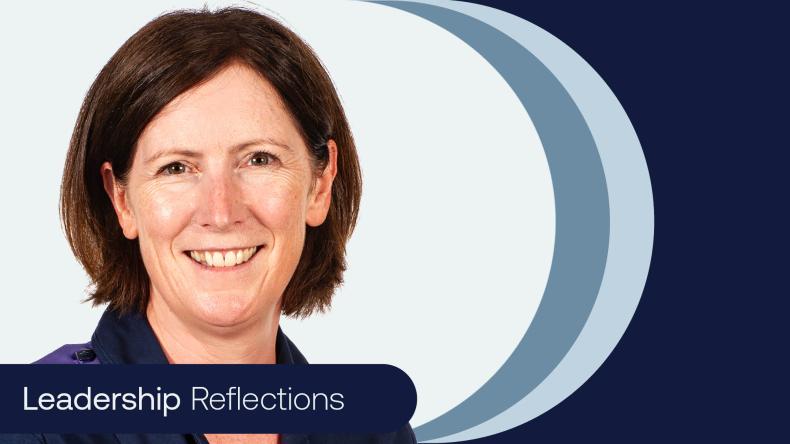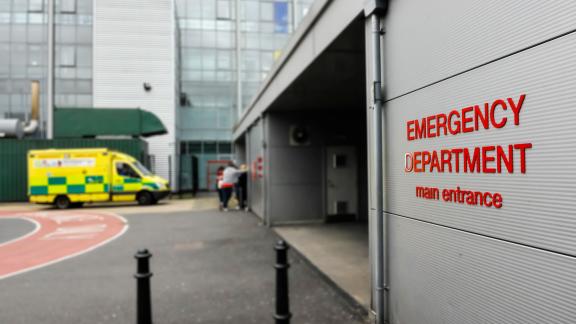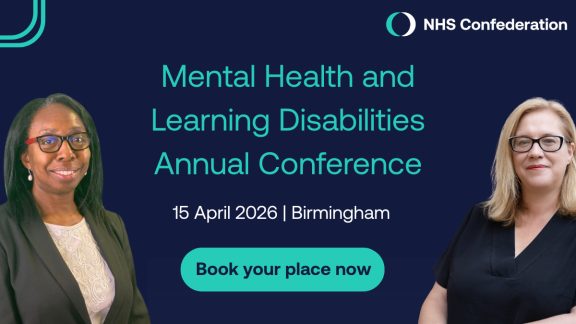
Introduction
In March 2018, former Russian military officer Sergei Skripal and his daughter Yulia were poisoned with a nerve agent called Novichok. The Skripals were rushed to the nearest hospital, Salisbury NHS Foundation Trust, where staff provided life-saving care. Three months later, Salisbury residents Dawn Sturgess and Charlie Rowley were also poisoned after finding a discarded Novichok container. Charlie survived, but Dawn died in hospital in July 2018.
During the five-month period when the poisoning victims were in hospital, staff at the trust found themselves dealing with unfamiliar challenges, often amid high levels of pressure and uncertainty.
The trust’s leaders are now applying what they learned when dealing with the Novichok crisis as they respond to the COVID-19 pandemic.
In this special feature, Cara Charles-Barks, previous chief executive of Salisbury NHS Foundation Trust, and Lorna Wilkinson, previous director of nursing at the trust, describe their experiences of leading the organisation through the Novichok crisis and how this prepared them for the communications, governance, leadership and workforce challenges of COVID-19.
View from the top
At the time of the crisis, Cara Charles-Barks had been in post for 12 months. Here, in her own words, she reflects on how the incident came about and how she and the wider trust responded.
Declaring a critical incident
It happened the weekend after we had the ‘beast from the east’ storm. We had declared a major incident because of the snow and many staff had worked over the weekend to support the incident. At about 6am on the Monday, I got a phone call from the on-call executive saying: “We have had two people admitted overnight with links to Russia. We’re not sure what’s going on, but they are critically ill.”
I remember feeling pragmatic about this initial news, but it became clear very quickly just how serious and unprecedented the situation was. Early that same morning, a major incident was declared.
Declaring a critical incident meant that from a tactical perspective, we had a system and process in place around the operational running of the hospital. This framework provided a structure for decision-making and, importantly, ensured that information and actions were quickly cascaded throughout the organisation. We also set up a clinical cell, led by Lorna Wilkinson, my director of nursing. The clinical cell was responsible for overseeing the clinical care of these patients. This was crucial because of the nature of the presentations and we really didn’t know what we were dealing with and therefore how to treat those admitted, or who may latterly present.
Emphasising organisational values
The nature of the incident meant that this was an unknown situation for us, particularly our clinical teams. For me it was important we went back to our organisational values, the things we’re there to do: to maintain stability when you’re dealing with chaos. Our values and our ambition, and what we stood for within the organisation, became really important.
Going back to our values, and living and breathing care and compassion for our patients and staff, became the cornerstone of our approach.
Right from day one, our messaging was that while we have two people here at the hospital that are very sick and will generate a lot of interest, we also have a number of other very sick individuals in our critical care unit along with 500-plus inpatients, plus thousands of other patients that use our hospital every week. We needed to be maintaining our services for everyone and everyone needed the best care possible. Going back to our values, and living and breathing care and compassion for our patients and staff, became the cornerstone of our approach.
It was crucial to bring people back to the point that we are defined by the quality of care we give and the care that we are delivering for everyone. Reminding staff of the role that they were playing in contributing to that was crucial and helped balance everybody. The reality is there were smaller groups of staff that were involved with the incident, but the remaining staff had to run the rest of the organisation to make sure we were delivering business as usual. They also played a crucial role in supporting the frontline teams that were more actively involved. We were really clear about not becoming distracted and worked to ensure our standards of quality were maintained in addition to not dropping performance around key constitutional standards.
So for me, it was about how to maintain the best standards across the board while at the same time dealing with an element of the unknown.
Protecting patient confidentiality
One of the challenges we experienced straight away was about confidentiality and security. One of the things that I’m incredibly proud of is that there was no breach of confidentiality from any of my staff at Salisbury. They were incredible in their professionalism and went right back to their values, right back to the NHS Constitution, and were fantastic patient advocates but also ambassadors for the organisation. This was against the backdrop of staff members being offered money by the media for information.
We were also aware of the impact on our local communities and the interest there would be in our patients. We worked closely with council colleagues to ensure that our collective messaging centred on protecting the privacy of the people who had come from our community.
Challenges of crisis communications
There were some things that came a bit left of field for us, so communication was a challenge. We needed to address communication internally with our team, particularly how we maintained the consistency of our messaging, but one of the real challenges for us was that we were dealing with a multi-agency incident.
Communication across multiple agencies can be challenging. Different organisations that want to communicate with the public can have different values and drivers. The messages that they want to communicate can look quite different to the ones that we may put forward from an NHS perspective.
There weren’t any precedents set around this, so challenging what we were being asked to do became an important part.
What rang true for us, both as an organisation and representing the NHS, could often be quite different from what other organisations wanted to put forward. We can remember many times when we would sit down and ask ourselves: ‘Is that OK to go in the public domain? Are we obligated to provide that information?’
We needed to check criminal law requirements against patient confidentiality. What were we obligated to provide and what was information that was not necessarily needed, wouldn’t add value, and might mean we were we in fact breaching patient confidentiality?
There weren’t any precedents set around this, so challenging what we were being asked to do became an important part; asking for validation, asking for the evidence for why something was important. It wasn’t being difficult, but it was about making sure we felt whatever information we were providing was the right thing to do and, most importantly, protected the privacy and dignity of our patients.
We had to build different relationships with our community partners in the police, fire service, and the council. That fuelled a different way of working for us – we came together in a way we hadn’t had to before. This was extremely positive in breaking down historical barriers and those relationships have been maintained, enabling us to now work together from a much stronger and united foundation.
In a situation like this there is never a risk that you can over communicate. Communication was really important for building trust with the team.
We increased our communication with staff tenfold, but we soon came to the conclusion that this wasn’t enough; in a situation like this there is never a risk that you can over communicate. Communication was really important for building trust with the team. That trust was really valuable because when we had difficult messages or if there was something they weren’t sure about, they trusted the information they were getting through us and also trusted that we were doing the right thing by them.
We also established a solid working relationship with the media – we were open, transparent and honest with them. Even if we didn’t have something to talk to them about, we would tell them that. We created a space for them on site where they could meet largely outdoors, so it wasn’t interacting with our core business. We were readily available and accessible to them and that openness and transparency meant that we worked well with the media and ensured that the organisation was represented fairly and positively.
Leading from the front
As the chief executive and executive board leaders, people will look to you for leadership. It’s important to recognise the strengths in your team and the different roles individuals play. Due to the nature of the incident my medical director, my nursing director and my chief operating officer were entirely focused on the incident. This meant other members of the executive and senior team needed to step in to fill other aspects of their portfolios to help us deliver our services during that time.
It was important to support our teams, encourage them and empower people across the organisation to act, while always coming back to the values and principles of how we deliver our services. It’s about balancing the fact that all things are equally important and that ability to maintain a collective overview.
Demonstrating an evidence trail in your governance ensures transparency when you’re trying to respond at pace.
When you’re making really difficult decisions, having the board’s support is crucial. Board governance is critical and should cover all aspects of the incident, including finance. For example, during the incident we put in place additional resources, so it was important we captured the cost of these to understand the financial impact of our response over a long period of time. This was true for Novichok, but equally for COVID-19 as well. A crisis doesn’t allow you to negate what should be your governance processes as an organisation, and that means decision-making through your committees and boards around some of those critical issues remains vital. Demonstrating an evidence trail in your governance ensures transparency when you’re trying to respond at pace.
The other key thing is knowing when to seek outside help. We were never backward about asking for external expertise. One of the most valuable elements of external support we received was from one of the NHS Improvement communications leads, who came down on site to work with us. He became an essential member of our team.
Managing workforce stress and anxiety
What we learned through Novichok, which we enacted quickly with COVID-19, was how to balance people’s workload and make sure that key roles have a back-up buddy. If it all falls to one person, they will carry an incredible amount of stress. Twelve months after Novichok, our clinical psychology team did an anonymous voluntary survey to the organisation to test residual stress and anxiety. We were surprised at the level of residual stress that people were still carrying about the Novichok incident. We will also learn so much more about residual stress and anxiety from our collective response and management of COVID-19. For me, this is one of the most important areas of focus as our primary responsibility remains about our staff’s wellbeing and recovery.
Supporting staff when their families and neighbours were anxious was incredibly important and that absolutely applies to COVID-19 too.
The difference with COVID-19 is that everyone feels vulnerable and potentially exposed and of course that creates a significant amount of fear and anxiety for staff and their families. With Novichok, we saw some really concerning public behaviours whereby children of staff members were at school and other children were told not to play with them because their parents worked at the hospital. Supporting staff when their families and neighbours were anxious was incredibly important and that absolutely applies to COVID-19 too.
Parallels with COVID-19
COVID-19 has been all-consuming but there were some things that we did quite quickly in response, following our Novichok learnings. We split the executive team, as we had with Novichok, so that everybody wasn’t drawn into responding to COVID-19. We ensured that there was a strong link with all our other services, making sure we were maintaining services as well as preparing in the background the foundations for recovery.
It was also crucial from my perspective to continue to connect the executive team together, so somebody working solely on the incident is linking with someone running ‘business as usual.’ This was to ensure that we all maintained that connection with the rest of the organisation, and people not directly involved in the incident were kept up to date.
It was exhausting suddenly standing on that threshold of something like COVID-19. Knowing what we were going to face was daunting, so I proactively put in quite a lot of support for the executive and senior team. It’s separate and outside the organisation, because executive and senior team members may not necessarily want to access the support teams that are in place within the organisation from a confidentiality perspective.
I worry about how we bounce back but achieve this in a way that supports our staff throughout, that recognises the impact of what they have been through and gives them the space and support to replenish.
I think the longitudinal residual impact of COVID-19 will be significant for the NHS. We must address the obvious gaps in health inequality and ensure that we have fair access to health services, which will need to be different to how we have done things previously. This will influence how we go about recovery of and resetting our services. I worry about how we bounce back but achieve this in a way that supports our staff throughout, that recognises the impact of what they have been through and gives them the space and support to replenish.
What we saw from the residual impact of Novichok, 12 months down the track, was that the anxiety aspect for staff and the pressure they felt under, took us by surprise. We had assumed that people had moved on and the reality was that people still needed significant support. NHS staff are incredibly resilient, they will dig deep over and over again but they aren’t inhuman and it will be the support we put in place for many years to come that will make the real difference.
Clinical leadership
The trust’s director of nursing, Lorna Wilkinson, played a key role in the response. In this section, she reflects on the role of clinical leadership and how this applies to the current challenges being faced with COVID-19.

Ensuring continuity of clinical leadership
Right from the start, I recall there were lots of conversations: a major incident had been declared and the police were the lead agency. A scientific and technological group was set up. There were several calls on that first day and a specialist sub-group was set up for me to start having clinical conversations with.
We ended up with a really tight group in the clinical cell. As well as myself and the intensivists on the unit, there were probably four external people on those clinical calls. Initially, the calls were three times a day and then they continued as daily calls for several months. It was a bit disconcerting that there were certain things that we weren’t able to know at that stage, but we had to go with it, information was evolving. We built up trust quickly in that group.
Certainly in those first couple of days, I tried to provide continuity on the external calls. I think we totted up that on day one, we had six hours of calls. I couldn’t take out an intensive care consultant for six hours, who’s actually meant to be overseeing and in charge of not just those patients but the rest of the ITU patients, so I took on that role of being the buffer from the outside world. As things calmed down, then obviously the intensivists were very much part of those calls. By then, we’d found our battle rhythm, and we had doubled up the intensivists on the unit.
Addressing staff concerns promptly
From very early on, I had promised the team that whatever information I knew and could share, they would know in real time. Looking back, I’m not sure I would change it, but it meant I was in all hours of the day, night and weekend. But it was really important to establish that trust in the clinical team. Everything I knew, they would know too.
You learn early on it can’t be just the one person, but it can’t be too many people or you become very fragmented and lose continuity in a rapidly evolving environment.
It was the initial phases that ate up my time, particularly in the first incident. Once we established what we were dealing with, how to treat it, had got the patients into a stable place, and our staff knew how to protect themselves, it reduced the time needed. After those first few weeks, myself, the chief operating officer and the medical director shared that workload and we were interchangeable across our roles. You learn early on it can’t be just the one person, but it can’t be too many people or you become very fragmented and lose continuity in a rapidly evolving environment. That balance is hugely important.
Applying the learning to COVID-19
What really hampered Novichok was the complexity and level of secrecy due to this being a live investigation. I think we’ve got a much better and overt structure around our decision-making when it comes to COVID-19. As well as the daily operational rhythm of calls, I also co-chair a clinical reference group in response to COVID-19. We have three meetings a week with myself, the medical director and all our clinical directors and heads of nursing. That is our hub for making the clinical decisions we need to make around our response to COVID-19, but also the impact of the disruption to other pathways that are non-COVID-19. For example, ensuring that emergency and urgent surgery pathways are COVID-19 secure. This group assesses and agrees the quality impact assessment of all of these decisions.
Early on in Novichok, staff anxieties around PPE were huge. That’s why very quickly in COVID-19 I set up a daily PPE call.
Early on in Novichok, staff anxieties around personal protective equipment (PPE) were huge. That’s why very quickly in COVID-19 I set up a daily PPE call. This has been a huge success and given us the ability to give real-time, clear information to our staff on usage, supply chain, and latest evidence.
Governance and accountability
Be assured that with the information available you are rooted in doing the right thing for your patients and staff. Be the advocate.
With any major incident and especially with the Novichok poisonings, it is vital that all decisions are logged and accounted for, so that they will stand up to future scrutiny. We became very well trained in the process of asking ourselves what decisions are were making, what is our rationale for the steps we are taking, how we were logging it, and would we be confident to stand up in any forum and have the evidence and rationale to justify that? In an incident with so much attention and potential ‘noise’ in the system, (which can act as a distraction), it was always important to root these decisions in our organisational values; something that is common to all healthcare providers. This is what we do every day in the NHS, often without consciously thinking about it, but a major incident of such public interest amplifies the need to stop, step back, think, and confirm. That really got ingrained in me in those five months of working through Novichok.
During COVID-19, I have also found myself continuously going back to asking whether we are doing the right things, for our patients and for our staff, because the external world can get very tied up in the politics. It is vital to be aware that other agencies could be coming at an issue potentially from a different angle. Be assured that with the information available you are rooted in doing the right thing for your patients and staff. Be the advocate.
Having the confidence to stand up for what is right is sometimes uncomfortable. I came out of Novichok thinking I was not sure if I’d made friends or enemies. You come to a point where it’s neither, but professional respect is a marker of success. In COVID-19, as in Novichok, we are all learning and the evidence base evolves over time. What is vital is that you are using the information you have and centralising decisions based around what is right for patients and right for staff.
Learning from the Novichok incident
Governance
- Have a clear governance structure for decision-making that clearly links in to the trust’s BAU governance processes.
- Ensure all key decisions are logged, and paperwork retained, as necessary.
- Ensure the trust board and committees are fully appraised of critical decisions relating to the crisis, where appropriate.
- Be prepared to challenge national and regional guidance, if there is a compelling reason why your organisation should take a different approach. Ensure appropriate assurance tasks are undertaken prior to any divergence from guidance, and retain records where a different approach has been approved.
Human resources
- Ensure staff roles are clear and not duplicative, both for those working on the incident, and those ensuring the rest of the organisation continues to operate effectively while the incident is under way.
- Ensure support is available for staff, through buddying schemes and counselling services, including providing services off site for staff who may not feel comfortable accessing in-house counselling facilities.
- Be prepared to support staff dealing with anxiety and stress for some months following the end of the incident.
Communications
- Ensure internal communications receive sufficient focus to give staff confidence that they have a clear understanding of an evolving situation.
- Be prepared to sense check requests for information against patient confidentiality requirements, particularly where other agencies are also undertaking communications tasks relating to the incident.
- Prepare staff so they know how to deal with risky situations, such as being offered money for information.
- Consider creating a dedicated area on site for journalists, so that they can carry out their work away from areas where trust staff are undertaking crisis management activity.



